Exclusive: The making of McCartney III - "Once he’s in the vibe, he doesn’t want to stop"
Engineer Steve Orchard and technical manager, Keith Smith on how Paul McCartney's lockdown pastime became an album
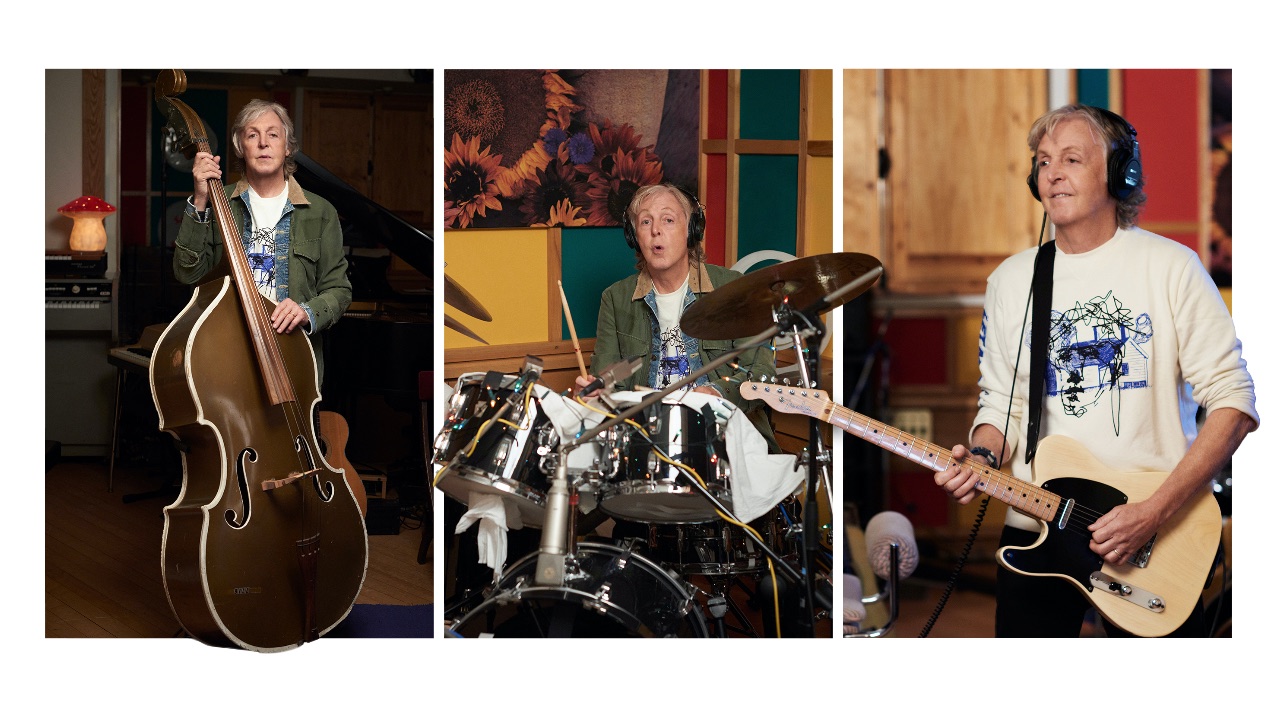
It’s been said that Covid has been a leveller of sorts - we probably wouldn’t go as far as agreeing with that - but if there was a common theme amongst musicians globally this year, it was that the absence of gigs forced us out of our usual comfort zones in order to search for other ways of occupying our musical minds.
Whether you’re a beginner or a Beatle, that meant playing. For some it was collaborative covers, online performances, or maybe even finishing off some music we’ve been sat on. Paul McCartney chose the latter, but as we sit down for a Zoom call with recording engineer, Steve Orchard and Paul’s technical manager, Keith Smith to talk about how McCartney III came to fruition, it becomes clear that he just didn’t realise it at the time.
What started out as a process of cataloging some of Paul’s ideas, turned into a complete album: the third in the McCartney solo trilogy, where Macca wrote and played every part on the record himself. So when did it become clear that a lockdown project was becoming an album? “When we finished!” Steve tells us.
“Yes, it was!” Keith adds. “He’s always writing, Paul. He’s forever recording or scribbling down little bits of ideas, riffs and lyrics and he’s collected them for years and years. Sometimes he has a big purge and we document them all and store them.”
“He just started to come in with some of these ideas and said ‘Let’s work on it’. It was literally demos for a bit of fun. He loves writing and recording and it was just something to occupy his time. We did that for 10 weeks, and seriously, we didn’t start thinking about an album until the three of us started thinking ‘There’s 10 really good songs here.’"
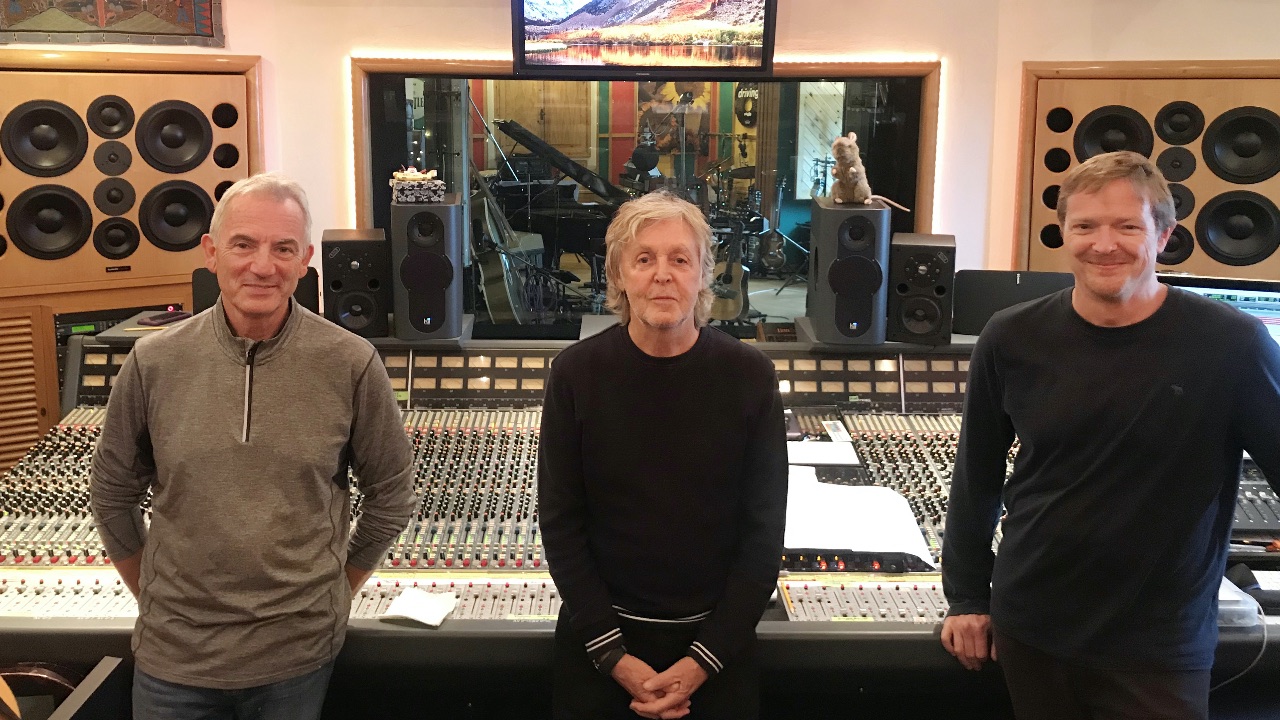
“We started joking about a lockdown album, then Paul took a break for a couple of weeks and he’d talk to other people about it - friends, family and even management I think and they just kind of jumped on it. It turned into an album after it had virtually all been recorded and mixed. He came back and we did some little tweaks and that was it.”
The final product is a 10-strong collection of eclectic music, ranging from rootsy acoustic themes through some classic heavy RnB and incorporating many flavours in between. Here, the only people present for the duration of the sessions talk us through how the project evolved, how each instrument was recorded and what it’s like to tell Paul McCartney he needs to do another take…
Want all the hottest music and gear news, reviews, deals, features and more, direct to your inbox? Sign up here.
McCartney III was made at Paul’s own studio - but we’re guessing that it’s unlike most peoples’ ‘home studios’?
Steve Orchard: It’s an amazing setup we’ve got here. It’s centred around a 60-channel Neve V Series desk, then we’ve got some vintage Neve preamps: 1081s and 1064s, we’ve got 10 channels of those. Then we’ve also got 10 channels of Focusrite ISA 110 vintage modules too. So that’s the bulk of the preamps, then we’ve also got some Helios and Chandler units as well."
"There’s a very good mic collection, a nice live room, everything is set-up, mic’d-up so we’re always ready to record and mix at the same time. It just depends on what we’re doing, often tracks will change. Paul will decide what he wants to do, so we have to be ready for any eventuality."
Given the circumstances the album was created under, did distancing and precautions make the recording more difficult?
Steve: “A little bit [tricky], but we were conscious of everything - we’d come in every morning and wipe everything down with wipes and all of that stuff, so we were being very careful.”
Keith Smith: “I think we were all aware, even from early on that we had kind of formed a bubble. Paul lives down here in Sussex on a farm and only had his daughter with him. I’m going home to a family, so is Steve, we’re pretty remote, we weren’t mixing with people outside of that. We really were bubbled. For the first couple of days I was tuning a guitar, wiping it and giving it straight to him.”
What is the main recording format in the studio, is it tape or a DAW?
Steve: “Pro Tools, really. We do go to tape sometimes, we’ve got a variety of tape machines here. There’s a Studer J37 four-track, one-inch which sounds amazing. We often use that, Paul loves that machine. We’ll often do half-speed recording and then play it back at different speeds for different octaves and the tonality shift that you get. Or to get something deeper we’ll record something at 15 ips and then play it back at 7.5 and transfer that into Pro Tools.”
Keith: “He’s really big on drums on it, there seems to be something about drums on one-inch tape that captures just a big fat sound.”
Steve: “We’ve also got a Studer 16-track with a two-inch headblock on it, and a 24-track too. We use [tape] as an effect rather than a method of working, because Pro Tools is the main crux of it. But we’ve got nice mics, nice preamps, I think that if you get the front-end stage of your recording chain correct, and as vibey as you can then it’s captured nicely.”
Can you remember the first thing that you started out recording?
Steve: “It was Long Tailed Winter Bird, I think. Which was a follow-on from the title music from When Winter Comes. It kind of spiralled on from that really. We did a couple of versions of the outro music that sort of morphed into this groove that Paul’s playing - the main acoustic riff in that. That was the beginning of the whole record, it kind of took us off on this route.”
Does Paul have an order for how he likes to track different instruments?
Keith: “Yeah, often it’ll be whatever he’s written it on. So if he’s at home sat at his piano writing Women and Wives then he’ll come in here and generally start on the piano. I’m always amazed, because I guess coming from a live background: everything seems to start around drums. You get the drum sound and then go from there.”
“Paul’s never worked like that. It always starts from the song. That’s kind of how some of this started. When he did Pretty Boys, he sat down and said ‘I’ve got this really nice little thing I’ve been working on’. It was a riff that he’s had going for ages, I recognised it from way back when he started playing it. He just sat down with an acoustic and knocked out the vocal and the acoustic at the same time. Then it just developed.”
Steve: “There’s no set rules with how he likes to work. If he’s got a song that’s fully-formed then he’ll sit down and put it down with whatever instrument he’s written it on, like Keith said. Sometimes with a click, sometimes without depending on how it feels. But really it just depends.
"With some of the songs that were more constructed, like Deep Deep Feeling, we’ll use Pro Tools like a canvas, almost. Throwing ideas at it, moving things around, changing tempos, keys, and seeing what gels together.”
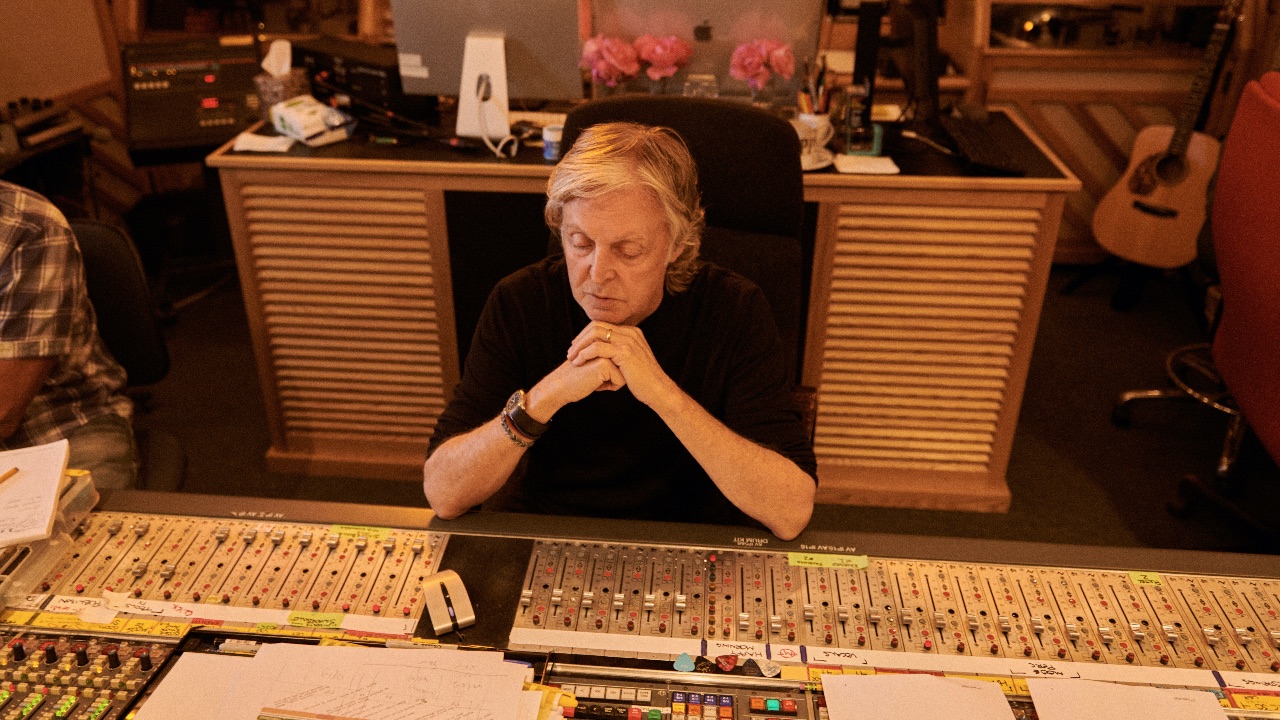
In those instances would he go back and re-do the parts to the finished arrangements?
Steve: “We wouldn’t really go back and re-do things. Quite often it’s the original take, and if it feels right that’s the most important part. Paul will go out in the live room and say ‘Doesn’t matter what it sounds like, let’s just do it!’. But then that’ll often end up being the final part, so it’s got to be right. Everything matters!”
Keith: “Steve often has to deal with a lot of spill. Paul will sit down, and he’ll want to perform it as a song, so he’ll do the piano and the vocal at the same time. From there it just develops and develops and poor Steve will have to somehow deal with the spill on the piano mic from the vocal.“
Steve: “You just have to record things with that in mind. I’ve got a big piece of foam that I’ll stick in the piano with the lid open, that helps cut out some of the spill. Also we use a Kaotica Eyeball, the big pop shield, that helps a lot as well. I’ll use some very close micing.”
Keith: “It’s part of Paul’s process and creativity, I think. He doesn’t like the interruption of having to get things technically brilliant. He’ll often say, like Steve just said ‘It doesn’t matter!’. He’s focused and in the vibe, and he really likes to keep going. He doesn’t like hanging around for much!”
Steve: “Yeah, he loves to work quickly. Because we’ve got everything set up and ready - there’s been times where he’s done a piano track, I’ve pressed stop on Pro Tools, looked up into the live room and he’s already behind the drums going ‘Come on!’. It keeps you on your toes!”
Do you have any go-to methods for dealing with bleed when you haven’t managed to eliminate it during the recording?
Steve: “Izotope RX8 has been superb on certain things. It works really well for getting rid of click spill or anything like that, it’s like audio voodoo. But I really do try and get it under control at the front end, then deal with anything else in software - or copying and pasting bits and pieces.”
“Occasionally we’ve had to re-do bits of guitar where there’s vocal spill and the final vocal melody has changed. So then we’ll just drop in little bits, but not very often.
"Music Rebalance is astonishing too. I used that a little while ago on some piano, we had a piano and vocal. I took the vocal fader down and you could still hear tiny bits of it, but it was nowhere near as apparent as it was.”
Making McCartney III: recording the instruments
Drums
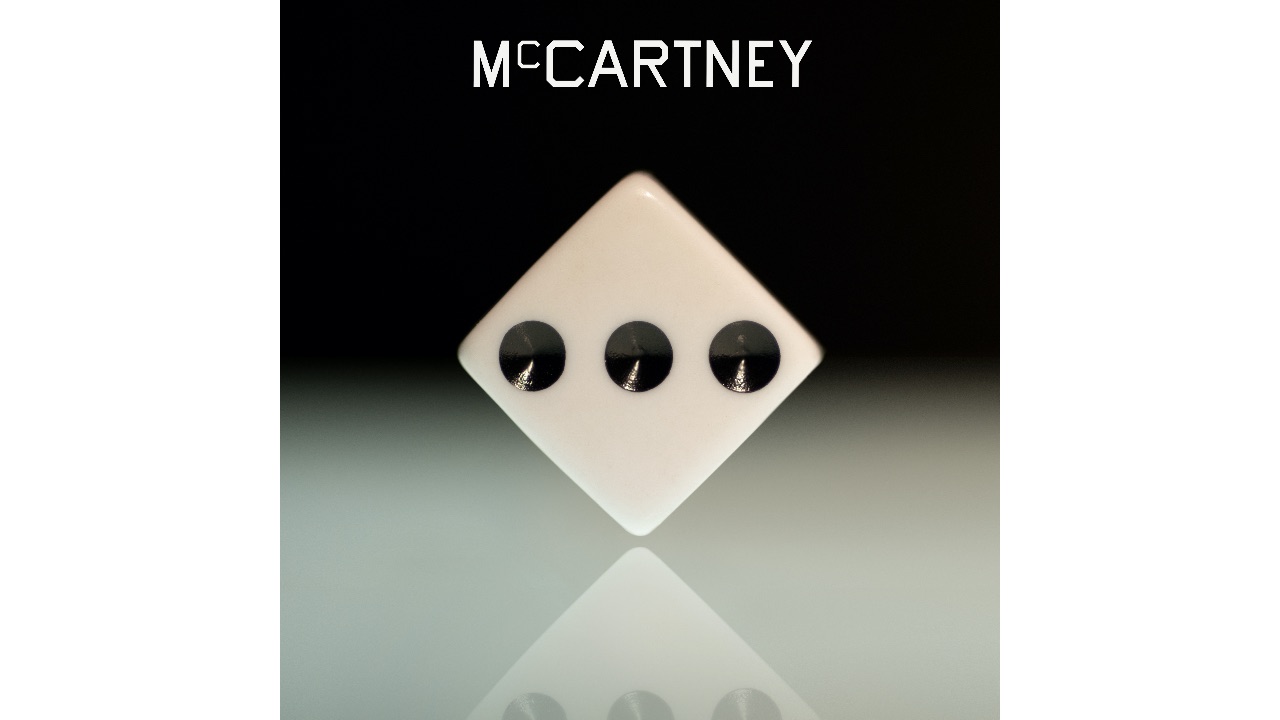
Keith: “The kit is a Ludwig Legacy Maple. He’s had it a long time, it’s actually a copy of a kit that Ringo was using here many, many years ago when we were doing the Anthology. Ringo left his kit here for a while, it was here for about a year and then he needed it back. So Ludwig very kindly replicated it for us, and we’ve had it for nearly 20 years.”
“I’ve added to it, there’s another floor tom and another rack tom. So we’ve got 12”, 13”, 16” and 18” toms, a 22” bass drum and a Black Beauty. Because of Abe’s [Laboriel Jr.] attachment to DW, they’ve been desperate to make something for Paul. But Paul loves his Ludwig, and there’s not a lot of point in giving him stuff, when he thinks drums, he thinks of that kit and he loves it.
"But they did send this really nice 12” piccolo snare which he loves and uses it. He’s got Zildjian cymbals on there, the same ones that he’s had for years - crash, ride and a pair of hats. Very simple.”
Steve: “He has the tea towels with Mr T on them too! You get that nice sort of tone doing that. There’s quite a few different techniques that we used for different things, depending on what we needed.”
“On one song we used plastic brushes on the snare, he’s hitting it quite gently, but then it’s cranked up so it sounds hard and aggressive. You make it loud and then it gives you that impression.”
Keith: “Often these suggestions come from him. He’ll walk around with a beater hitting things, like the side of the Rhodes trying to find the sound he’s looking for. He’s always been very experimental with things like that.”
Does Paul refer to Ringo’s playing when it comes to his own drumming?
Keith: “I think almost definitely, he always refers back to Ringo for feel. We’ve had some amazing drummers around Paul, and now with Abe who is just stunning. But Ringo is always the guy he’ll defer to when it comes to vibe.”
“We did something with Ringo not that long ago, it was just the two of them in Ringo’s studio. Ringo feels exactly the same about Paul, he said something and Ringo goes ‘Well, it should be… he’s the best bass player in the world.” I think they mutually feel like that.”
Steve: “It’s all close mics, really. I’ve got a couple of mics on the bass drum. There’s a [AKG] D12 inside, then a [Neumann] FET 47 just outside the port hole. I also have a little trick with a water bottle, instead of the NS10 speaker cone thing that people do - I put an omni mic inside a bottle. It’s just a water cooler 5-gallon bottle - empty obviously.”
“You dangle an omni pencil condenser in there: I’ve got a JZ BT-201 in there at the moment. Then you just roll off all the top end, everything above about 100Hz with a hard filter. You’ve got to watch the phase, and it’s also tempo-dependent. If it’s a really fast track it doesn’t really work. But it gives you a sort of 808-y feel.”
“Then I’ve got a few mics on the snare, there’s a Shure SM57 - it’s just the best mic for the snare really you can’t really go wrong with that! I’ve been using an AKG D190 on the top recently too. Then it’s just a combination of those two and some Pultec EQ to give it a nice brightness and fatness. I’ll mic the bottom of the snare too, so it’s just blending the three together.”
“On the toms I use 414s, which work nicely in hypercardioid with a pad, but pretty close-mic’d, a couple of inches off the skins. You get a really nice roundness from them. For the overheads, I’ve got two sets of overheads that I use: two Neumann TLM170s and then two Coles STC 4038s and I’ll mic them from behind [the drummer].”
“They work really well because you get the fatness of the Coles, and then the clarity from the Neumanns. I blend them all together as a pair, and in that position you get a nice balance of the kit because it’s from the drummer’s perspective.”
“The toms balance really well, and I don’t filter out overheads to sound really thin, like cymbal mics. It works for gigs, but when you’re recording a kit you kind of get the whole picture of the kit this way. They’re all mounted on a Manfrotto stereo bar so it’s all really neat and sits just behind and over the drummer’s shoulders.”
“Then for room mics I’ve got a pair of AEA R44s - the big ribbons. I put them through the Chandler TG limiter set on stun. They’re pretty close to the drum kit really, just a few feet in front and it sounds enormous. If you put them too far back then it starts to cause timing issues with the slapback.”
“But they don’t sound close, it sounds like a massive room, and that’s down to the amount of compression and limiting going on. I also have a couple of crunchy, overdriven mics too, I’ll use a couple of [Neumann] U 87s and just roast the preamps on those. When you blend a little bit of those in, they give everything a little bit of dustiness and depth.
“So [the drum sound] is sort of a combination of everything that’s getting the overall sound, but with that amount of mics you have a lot of flexibility. If you take the rooms and the crunchy mics out then you get a much cleaner sound. Take the sub out and you’ve got a tighter bass drum. So it’s quite a nice sort of palette to work with depending on what the song needs.”
Bass
Keith: “90% of it was the number one Hofner 5001. Paul’s got other Hofners, and he’s got other basses. He’s got his Rickenbacker - the Ricky from the 1970s and a Wal five-string and a couple of other things that we’ll occasionally drag out if he wants to try something different. But 9 times out of 10, he’ll pick up the Hofner. When he plays the Hofner you can tell it’s just part of him. It’s so organic and such a natural feel and sound for him, and it always sounds phenomenal.“
“For years I’ve been trying to find a really good spare. I think we’ve got about 12 other Hofners, some of them I’ve acquired to try and be the number two spare, and it’s only just happened in the last year or so where Nick from Hofner came over and we went through every little bit of Paul’s.”
“He ended up building a number two from ’61 and ’62 parts. But this one, the number one, he just picks it up and plays it and it sounds great. It’s one of the most unique sounding - not just basses, but Hofners.”
Steve: “It doesn’t sound like any other Hofner. Sometimes they can be quite hard to record, Hofners. They can be really subby without a lot of tone to them, it’s all woof. But there’s something unique about Paul’s one, maybe it’s just the amount of music that’s gone through it from his fingers! It’s like a good old acoustic guitar, there’s something about how the wood absorbs all of those frequencies.”
Keith: “I think I’ve noticed with the Rickenbaker - it doesn’t change his playing style - but maybe because he’s experiencing a very different sound from the Ricky than from the Hofner he’ll maybe use some slightly different techniques. But it’s almost irrelevant because his number one, go-to is the Hofner.”
“He’s been using Mesa/Boogie for years, live and in the studio. At the moment he’ll use this big Strategy Eight: 88 valve amp which has 8 KT-88s in it. But for the studio they built us a small one, half-size Prodigy I think it’s called. That goes into a really nice sealed 4x10” Boogie cabinet. Again, it’s almost irrelevant because the Hofner straight into the DI sounds great, but then Steve mixes it with the mic on the cab.”
Steve: “Yeah, I’ve got an Avalon valve DI box, then I’ve got a FET 47 into a Neve 1081 preamp. I also have a ‘speaker-mic’ which is a Dynaudio bass driver mounted on a mic stand. I have that parallel with the 47 and use that as a mic. You get a nice big fat, round sound from that.”
“His bass is flat nearly all the time [on the desk], sometimes I’ll add a bit of mid but 9 times out of 10 it’s just straight in. I have a couple of compressors, Urei 1176s that I’ll use on the way in, but the tone just comes from him.”
"For the distorted sound on Slidin’ we reamped the DI signal. There’s a couple of different pedals on that. There’s the Little Big Trees which is by Audio Kitchen. It’s like a little 2.5-watt valve stompbox and it sounds amazing. Then I also put it through an Electro-Harmonix Bass Micro-Synth. So it’s just a mix of that and the clean signal. I think there might have been a bit of Decapitator going on too!”
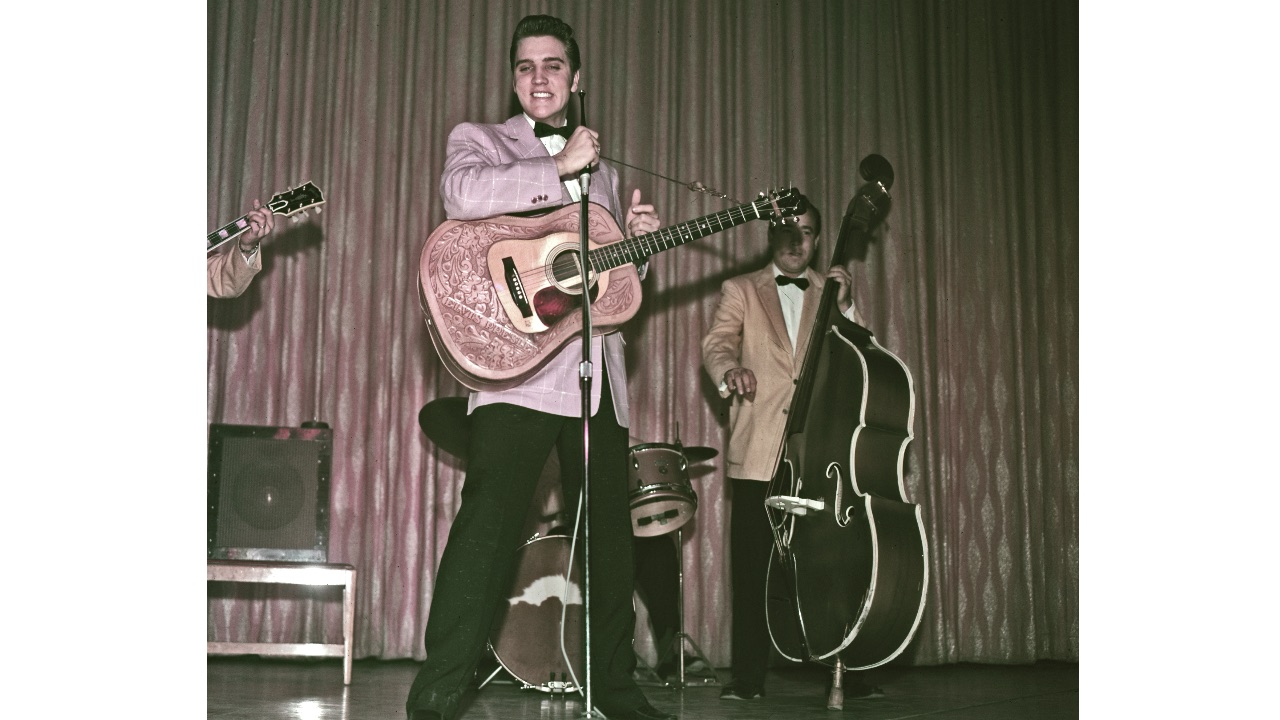
Keith: “I should just add, on Women and Wives Paul used upright bass - Bill Black’s (Elvis’ bass player) upright bass. It’s very famously owned by Paul, he’s had that a long time. It’s a Kay Maestro M-1.”
“It’s still strung right-handed for Bill Black, Paul just turns it around and plays it the other way round! It’s a lovely sound, it’s 1952 or 53 I think I’ve managed to pin it down to, and Paul’s owned it for 20-25 years. He bought it, I think, from Scotty Moore’s family.”
Steve: “I record it with a couple of Neuman U67s through these Helios mic pres we’ve got. They’re actually old desk channels with the pres and EQ from Paul’s desk that he used to have up in Scotland. I also used the speaker mic placed quite close to the F-holes.”
“One 67 was down by the bridge, then the other was up near the neck. You get the roundness from the body, but you get quite a lot of sound from a double bass from the upper areas, up where the hand is. Then there’s some compression from a Neve 33609 and the 1176s just to even the notes out and keep it solid.”
“There’s Moog bass on Deep Down, and also on Find My Way the bass switches between the Hofner and the Moog, sort of intersecting in different sections of the song. We use the Moog a fair bit.”
Keith: Yeah, it’s that nice classic 70s Minimoog that was probably bought for a Wings tour. There were two of them: one that went on the road and this one. It’s hard to keep it going, there’s not very many people that can keep it going. I’ve got one guy I know who can fix them and keep it going! It’s not easy, it’s getting harder now!
Electric guitars
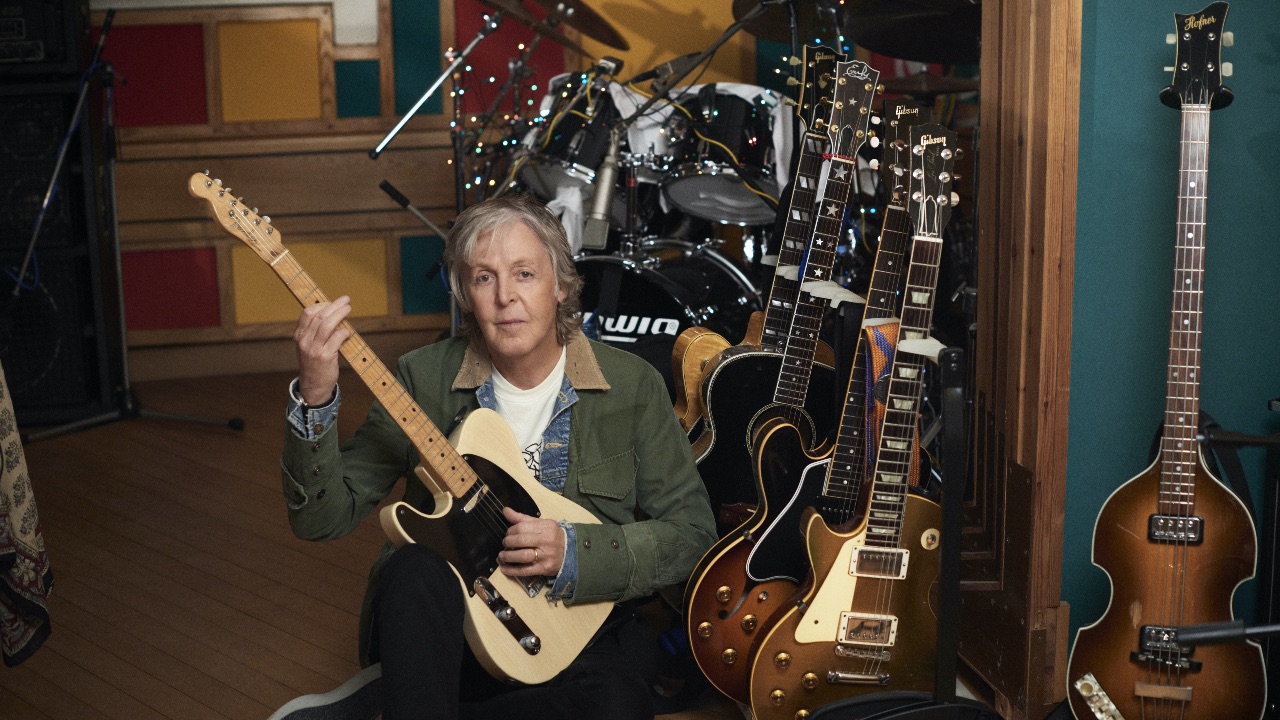
Keith: “I’d say he uses three main guitars. For a really straightforward rock ’n’ roll sound he’s got a ’57 Gibson Les Paul Goldtop which is always his go-to chord-y rock sound. It’s PAFS in that, and it’s all original as far as I know. He got it before my time, but that’s his big rock sound through his AC-30.”
“The Tele was used on quite a few tracks, but in Paul’s mind a Tele is a really nice clean, sparkly, almost country sound. He’ll say “I want something really clean…let’s try a Tele.”. It’s a real favourite of his at the moment because he hasn’t had it very long. It’s a mint condition, 1954 lefty which is rare as hen’s teeth.”
“He’s had it three or four years now and he’s really enjoying playing it at the moment. It just sounds beautiful, I’ve got a great little pedalboard that I built that he’s not that interested in! He sticks the guitar straight into the AC-30 and gets the sound, that’s how he’s always done it and I think that’s how he’ll always do it.”
“A few years ago Gibson wanted him to do a signature version of his ’64 Epiphone Casino. We ummed and ahhed, and it didn’t really take off. We saw that everyone sort of has a signature model, and to Paul and it didn’t really seem that important.”
“But, to demonstrate the quality of the guitar that they’d make for him they sent a really nice 330 from the Custom Shop. It’s only about 7 or 8 years old, and I dug that one out."
"I’m always going through Paul’s guitar collection and restringing, checking, repairing and making sure they’re all up to scratch. Paul likes to be able to take a guitar out and play it without too much fuss. So we sort of rediscovered this 330, it’s just a really great sounding guitar.”
“Then there was another similar find. When I was going through the guitars I found - well, I knew we had it! - but a 1949 Gibson ES-5 lefty, which again is just so rare. It’s a really weird guitar because I think it’s a precursor to the Switchmaster.”
“It’s got three pickup controls, but only one tone, it doesn’t have the switches in it or anything. We spent a lot of time with it plugged in kind of messing with the controls trying to get the right tone out of the three pickups without any individual tone. But you get a very particular sound, it’s just warm and jazzy. Again, Paul will think ‘I want a nice warm tone’ and that’s the ES-5.”
“That’s how he tends to do it, if he’s got a song and sound in his mind then it’ll either be a great, straightforward Les Paul with big chords into his Cornish G2, which is probably the only pedal he does use regularly. Then if he wants something really sweet and clean it’ll be the Tele.”
“Like I said, I put together a pedalboard for him years ago which every now and again he’ll say ‘Have we got an octave divider’ or something. But basically it’s into the AC-30, either normal or brilliant channel."
"That’s how he tends to get his two sounds. He does quite like the Pete Cornish G2 because he uses that on stage, he likes the sustain out of it mainly rather than having too much gain. He’ll wind back the drive and wind up the sustain just to get as much out of his Les Paul for solos as possible.”
“The AC-30 tends to be Brilliant-Brilliant. If he’s in the Brilliant channel then he wants it to be bright, so he’ll have the top end all the way up, bass rolled-off and the volume up. It’s always loud in the room!"
"That one was born in 1975, again, for a Wings tour. He’s got two of them, the spare is in really nice condition too. But this one that he uses now is his number one, it’s getting a little bit crackly here and there but it copes well with what he throws at it.”
“He’s got a Watkins FZ 2 fuzz on the ’board too. It’s a really nasty little fuzz that I heard Spike using when he was mixing New. You can get some horrible sounds out of it, but it’s a brilliant little effect. Then there’s the Cornish G2, an Octavider, a couple of T.Rex things - a vintage time delay.
"There’s a really nice Boogie Tone Burst pedal, which is exactly that. it’s a little line driver with EQ and gain on it, and it’s great for adding a little bit of drive and top end to a guitar.”
“Hofner sent us some really weird, funky little pedals they made a little while ago. One of them is a little analogue delay called Time Again, which is quite cute. I’ve got an MXR Phase 90 - a genuine original one, that’s standing by. We’ve got a couple of other things, like a T.Rex tremolo but that’s about it.” Pete Cornish put it all together for us so it’s all nicely done, and all works nice.”
Steve: “I’ll have an SM57 and a U67 on the guitar amp, with both capsules lined up on top of each other. They’re a few inches away from the cone, just slightly off-axis. Then they go into a couple of Neve 1081 channels.”
“I’ll also put the drum room mics - the AEAs - in front of the amp. I’ll move them around a couple of feet away, and again they’re going through the TG limiter so with the amount of compression/limiting going on it sounds like they’re miles away.”
“Sometimes I’ll boost a bit of upper-mids on the Neve, but more often than not, the sound is coming from the guitar and amp. I try not to step in with EQ as my first stage. It’ll be things like moving the mic, adjusting the amp rather than slamming the button in straight away and cranking in the top end. I think the more you can get things sounding right at the source, it’s always going to work better, then use EQ as a corrective thing.”
“For Find My Way we used a quarter-inch Brenell tape machine. It’s got a speaker built into it, Paul will record a lick into it, and then we’ll play it back at different speeds through the speaker. We’ve got a tape loop set up with a tape reel the lid of a coffee can so you get a continuous loop.“
“It’s got a sound-on-sound mode where it lifts the tape away from the record head so you can have a couple of different sounds playing at the same time. Then when you put it into playback mode you can play it at different speeds and get different octaves. We’ll record that into Pro Tools and edit them up.”
Acoustic guitar
Keith: “His main acoustic is his Martin D28 which he’s had for about 30 years. He’s used that for everything, recording, live. We’ve got a couple, we’ve just got a new-ish one and he’s got an older one, a ’64 D28 that lives at home with him.”
“He wrote a song on his last album called Confidante, and that was written about that guitar. But we got this one new about 28-29 years ago. Throughout Wings he was using Ovations because back then they wanted a pickup for live and Ovation was the only way to go then."
"They’ve kind of been bettered by other things since then. So when we got the Martin all those years back we developed some ways with little Crown contact mics, it’s now progressed to a pickup but when we’re in the studio we just mic it up.”
“He’s got a nice collection of acoustics - one of the other ones that he uses a little bit is the Blueridge. When he goes to the office in London, he often goes for a little walk past Hobgoblin Guitars and they often have left-handed guitars in there.”
“I think that’s where he first got a Blueridge, he just went in and saw this really nice Blueridge and bought it. It’s been in his office ever since. We were in Japan a couple of years ago and this guitar just turned up from Blueridge, they’re a Japanese company. So we’ve had that for a long time now.”
“It’s a really nice sounding guitar, quite a bit brighter than the D28 and he loves the way it plays and sounds. We tend to have a guitar in the control room at all times so he can pick it up if he needs to work something out, and the Blueridge will often make it onto recordings. I think it’s on at least one song.”
Steve: “I’ve got a couple of setups for recording the acoustic, depending on what feels appropriate for the song. The first one is a couple of Neumann U67s through the Helios channels. I’ll put one near the soundhole and one near the neck as a combination. I’ll often compress them with the Neve 33609 compressor too. But I also have a pair of JZ mics. There’s a Blackhole and a 201and a combination of those two works well. They’ll go through the Neve 1081 preamps with some EQ.”
“Most of the time I’ll mic them in stereo like that, sometimes I’ll use the valve 47 - the vocal mic. Even if you pan the mics together so it’s a mono point, [the two mics] just helps with the size of it. Sometimes when you use just one mic you’ll get certain notes ringing out so strongly, so doing it in stereo can help with getting the balance.”
Piano/keys
Steve: “We have a Steinway baby grand here, and I’ve got a couple of DPA 4006s on that. I think omni-patterned mics just work so well on piano. They get a fuller sound and capture all of the harmonics nicely. With cardioids you can sometimes get a bit too much proximity, and it all gets a bit too pointed."
"I’ll place the mics straight over the hammers, and occasionally I’ll take the AEA ribbons and place them in the classical position at the foot of the piano just to get a bit of space around it. Then they go through another set of Neve 1081s, and sometimes I’ll compress the piano through the Neve 33609 or even with the Chandler which gives it a completely different sound."
"Then with the Rhodes we take a DI, and I’ll mic the speaker boxes up too. The blend of the two of those gives you a really good depth. I do the same on the Wurlitzer where I’ll mike up the crunchy little speakers.”
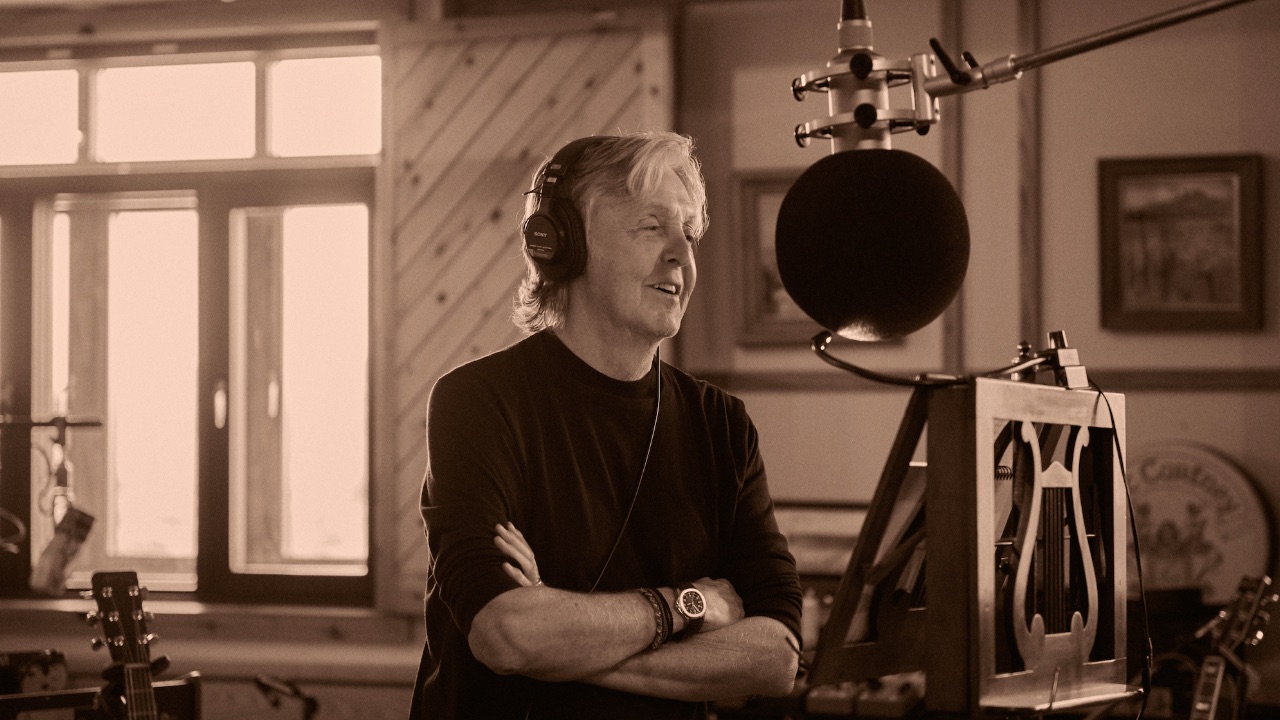
Vocals
Steve “I generally use two or three mics on Paul’s voice. We’ve got a Telefunken valve 47, which is an old one. Then we’ve got a Wunder CM7, which is their sort of their valve 47. And then I’ll use an SM7 sometimes, depending on what the song is. We used the SM7 on Lavatory Lil and also on Find My Way. I put those vocals mics into Focusrite ISA 110 preamps, and then we’ve got a couple of Fairchild 660 compressors, so I use those and it sounds great! No EQ, just straight in."
“More often than not we’ll stick with the same mic for the song [for lead and backing vocals]. He’s amazing with harmony because he’s got all of this knowledge and experience behind him. He knows everything about chords and melody and what notes travel against melodies to make really cool harmonies.”
“With Deep Deep Feeling there were some parts where we did something like 12 or 18 tracks [of harmonies], I can’t remember without looking at the session, but it was a lot. Then we mixed those down to a stereo track that we could fly in at different points.”
Keith: “He never looks for the obvious harmonies. When he’s done a vocal, he’ll go out in the room sometimes and he’ll hear the harmony in his head. He never has gone for the obvious one - if you listen back to him and John on Beatles stuff, it was always the one that makes you go ‘Ooh, that was a bit weird, but it’s lovely’.”
Steve: “I find it astonishing that he’s never fallen into any working patterns. He’s never complacent about anything, even if he’s out there doing a shaker part, he’s really getting into it, performing it. Or if he’s doing a guitar part, he’ll figure out all the different inversions and work out which suits the part best. So it’s always stemming from that raw performance place.”
Keith: “He’ll ask [what we think of a take], because he kind of also knows if he’s cracked a little on a note or something. He’s often looking to me or Steve to say ’Nah, do another one’. We always say we’re doing another one, just in case.”
Steve: “Just for choice!”
Keith: “Some people have asked me ‘So what does it sound like?’ when we’ve done a new song. And I find myself thinking, We’ve sat here for so long, and we’re in danger of taking it for granted. He comes in, sits down, performs a song and we record it."
"He’s so prolific, I find myself thinking ‘Yeah, it’s another Paul McCartney song’. Then I think ‘No, it’s another Paul McCartney song!’. But to him it just pours out, and it has done ever since I’ve known him, it’s amazing.”
“It’s what he’s good at and it’s what he really enjoys. He loves being in the studio and creating, and that’s why I was saying earlier about how it has to be really fluid. Because distractions can really hamper a process."
"Once he’s in the vibe, he doesn’t want to stop. A phone call or something not working is a distraction to this enjoyment he’s getting from building something that was in his head, and then ends up as he used to say, ends up on a tape in a box on the shelf. He loves that process of finishing it and putting it one the shelf and it’s a done thing that you can listen to.”

Stuart has been working for guitar publications since 2008, beginning his career as Reviews Editor for Total Guitar before becoming Editor for six years. During this time, he and the team brought the magazine into the modern age with digital editions, a Youtube channel and the Apple chart-bothering Total Guitar Podcast. Stuart has also served as a freelance writer for Guitar World, Guitarist and MusicRadar reviewing hundreds of products spanning everything from acoustic guitars to valve amps, modelers and plugins. When not spouting his opinions on the best new gear, Stuart has been reminded on many occasions that the 'never meet your heroes' rule is entirely wrong, clocking-up interviews with the likes of Eddie Van Halen, Foo Fighters, Green Day and many, many more.